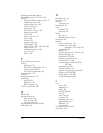
Page 244 Other Product Information
Safety and General Information
IMPORTANT INFORMATION ON SAFE AND EFFICIENT OPERATION. Read this information before using your in-
tegrated multi-service portable radio.
For the Safe and Efficient Operation of Your Radio, Observe These Guidelines
Your radio product contains a transmitter and a receiver. When it is ON, it receives and transmits radio frequency
(RF) energy. The radio operates in the frequency range of 800 MHz to 1990 MHz and employs digital modulation
techniques. When you use your radio, the system handling your call controls the power level at which your radio
transmits. The output power level typically may vary over a range from .001 Watts to 2 Watts.
Exposure to Radio Frequency Energy
Your Treo is designed to comply with national and international standards, including United States Federal Com-
munications Commission, OET Bulletin 65 supplement C; American National Standards Institute (ANSI) IEEE. C95.
1-1992; Cenelec EN 50360; and Industrie Canada RF exposure guidelines.
In order to comply with FCC RF exposure safety guidelines users MUST use a Handspring brand body-worn acces-
sory during body-worn operation. Use of accessories not provided by Handspring or that have not been tested for
RF exposure compliance with this product may not comply with the FCC RF exposure safety guidelines and should
not be used.
To assure optimal radio performance, always adhere to the following procedures:
■ When placing or receiving a phone call hold the radio as you would a telephone.
■ Speak directly into the microphone and position the antenna up over your shoulder.
■ DO NOT hold the antenna when the radio is “IN USE.” Holding the antenna affects call quality and may cause
the radio to operate at a higher power level than needed.
Interference to Medical and Personal Electronic Devices
Most, but not all, electronic equipment is shielded from RF signals and certain electronic equipment may not be
shielded against the RF signals from your Treo communicator.
Pacemakers
The Health Industry Manufacturers Association recommends that a minimum separation of six inches (6") be main-
tained between a handheld wireless phone and a pacemaker to avoid potential interference with the pacemaker.
These recommendations are consistent with the independent research by the recommendations of Wireless Tech-
nology Research.
Persons with pacemakers should:
■ ALWAYS keep the phone more than six inches from their pacemaker when the phone is turned ON.
■ NOT carry the phone in a breast pocket.
■ Use the ear opposite the pacemaker to minimize the potential for interference.
■ Turn the phone OFF immediately if you have any reason to suspect that interference is taking place.
Audio Safety
Some hearing aids may be affected by some digital wireless phones. You may want to consult your doctor in the
event of you experience interference with your hearing aid while using Treo. When using the speakerphone feature,
it is recommended that you place Treo at a safe distance from your ear.
Other Medical Devices
If you use any other personal medical device, consult the manufacturer of your device to determine if it is adequately
shielded from external RF energy. Your physician may be able to assist you in obtaining this information.
Turn your phone OFF in health care facilities when any regulations posted in these areas instruct you to do so. Hos-
pitals or health care facilities may be using equipment that could be sensitive to external RF energy.


















